It’s hard to believe that we’re already two thirds of the way through the month of October and on the home stretch of our second annual 31 Days of Horror. For those who may not have been following along, check out both Part 1 and Part 2 before continuing along with Part 3.
We know it’s getting old but we’re going to specify one more time that this list isn’t meant to be a history of horror or “greatest hits.” It’s a curated list of all subgenres and types of horror meant to appease all kinds of viewers but it’s also meant to just be a fun way to celebrate Halloween across the entire month.
With that, let’s talk about a few more films on our way to the conclusion of our second 31 Days of Horror!
October 21st: Mandy (2018)
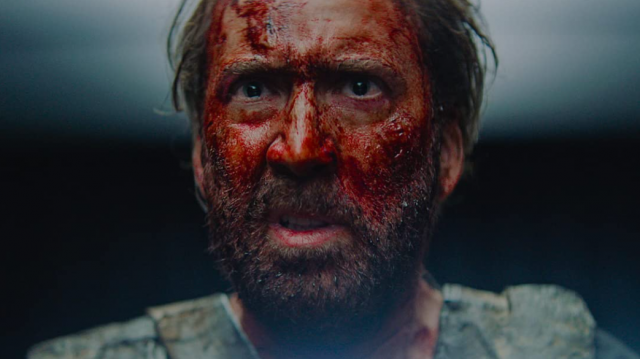
For our first entry of Part 3, we turn to probably the most visceral and surreal film on our entire 31 Days of Horror. Panos Cosmatos’s universally praised 2018 film, Mandy, stars Nicolas Cage as Red Miller, a man whose reclusive life is turned upside down by a hippie cult. Living near the Shadow Mountains in 1983, Red and his girlfriend, Mandy (Andrea Riseborough), enjoy a quiet life before Jeremiah Sand (Linus Roache) and his Children of the New Dawn set their sights on Mandy. They break into the couple’s home and unleash a brutal and relentless attack on them but they leave Red to suffer alone after they get what they came for. Red escapes from his restraints and sets out on a mission of bloody vengeance against the Children of the New Dawn to right the wrongs done to both him and Mandy.
Before anything, we just have to say that Mandy is absolutely wild. While no doubt a slow burn, the film doesn’t let up once it gets going. The beginning is quite laid back and subdued but still with a surrealist tone and color palette to admire. It’s only when the murder begins that Mandy turns into a grindhouse style gore-fest that will satisfy fans with even the largest thirst for blood. In one of his best performances ever, Nicolas Cage doesn’t ham it up or act goofy as he’s typically wont to do. Following the attack, Cage’s Red turns into a deranged psychopath hellbent on revenge but you don’t necessarily blame him for it either. Cage is perfect as his character slaughters his way across a nightmarish fever dream that stuns as much as it distresses.
Mandy marked something of a career renaissance for Nicolas Cage with his foray into psychologically twisted and weird new horror films. With films like Color Out of Space and Willy’s Wonderland following Mandy, Cage has carved himself out a nice niche after some waning popularity and quality of films in the mid 2010’s. It’s not that surprising, though, given the unique appeal of a film like Mandy. There just isn’t anything out there that really compares to it. It’s masterful surrealist filmmaking with an 80’s feel and a bloody, modern day body count which all equates to something you don’t see in one film. As previously mentioned, the early parts of the film are extremely slow and are sure to turn some viewers off. Yet, if you stick with it and don’t mind excessive violence, Mandy has all the horror goods that you could ask for.
October 22nd: Fear Street Trilogy (2021)
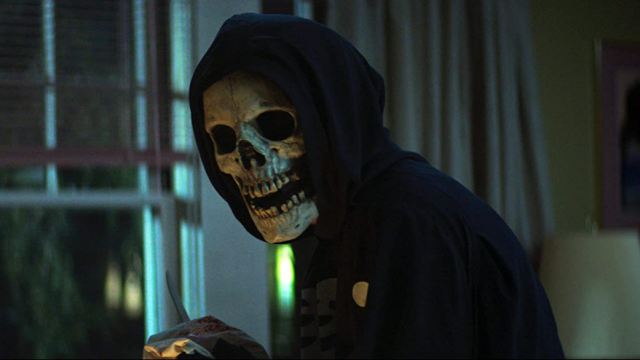
For this entry on our 31 Days of Horror, we’re doing something a little different. Today, you’ll be getting three films instead of just one as we cover Netflix’s Fear Street trilogy! Based on teen horror writer R.L. Stine’s book series of the same name, Fear Street centers on a group of teenagers trying to break a curse that’s plagued the small town of Shadyside for centuries. The trilogy spans across three different time periods: 1994, 1978, and 1666. The first film, Fear Street Part One: 1994 opens with a shocking, but unsurprising for Shadyside, murder. Many of the town’s teenagers believe it to be the curse of Sarah Fier, a woman executed for witchcraft back in 1666. Lead character Deena Johnson (Kiana Madeiro) and her group of friends unintentionally stumble upon the burial site of Sarah Fier and are soon stalked by a group of potentially supernatural killers. Part Two: 1978 flashes back to a Friday the 13th-esque summer camp where the nightmare continues as people supposedly being possessed by Sarah Fier are attacking campers. Finally, Part Three: 1666 goes all the way back to the 17th century where we see the origins or Sarah Fier and the ultimate conclusion of the 1994 storyline.
Obviously, there’s a lot of plot to cover across three films so we won’t be addressing everything that happens across all three films here. As you can see from the brief outline above, the centuries-long curse of Sarah Fier and the history of murder in Shadyside is the main focus across the board. Though, each installment puts a unique spin on the story and pays homages to different types of films within the horror genre. 1994 feels a lot like Stranger Things Season 3 mixed with something like 90’s teenaged slasher flicks like Scream or I Know What You Did Last Summer while 1978 is basically an early Friday the 13th film with its summer camp setting and potato sack wearing killer. There’s no doubt that 1666 is the most different of the trilogy as it brings to mind Robert Eggers’ fantastic 2015 film, The Witch, before wrapping up its 90’s slasher story.
Even though the Fear Street trilogy isn’t always the most original, it’s a very well made and entertaining little series for horror fans. Released at a time before many theaters got back into the swing of things, Fear Street was a breath of fresh air and further proved that streaming services aren’t only the future for distribution but also part of the present. In addition, getting a new film in a series for three consecutive weeks is a fun and effective way for horror fans to absorb something like this as opposed to waiting a few years in between sequels. The Fear Street trilogy felt like a group of films made by horror fans for horror fans. Again, what the series lacks in originality is made up by its knowledge and appreciation of the genre. Fear Street is a must watch this Halloween if you didn’t watch it upon release.
October 23rd: The Texas Chain Saw Massacre (1974)
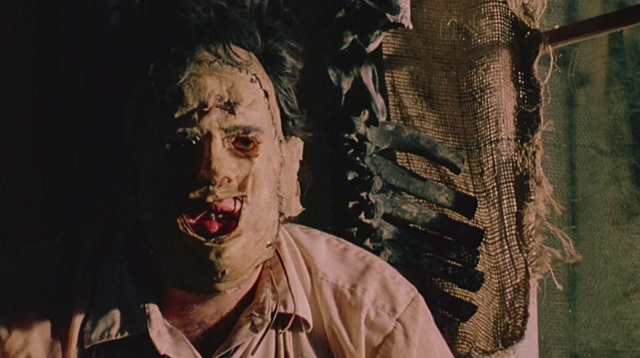
For the 23rd film on our 31 Days of Horror, we go back to a title that paved the way for something like yesterday’s Mandy in terms of tension, depravity, and violence. Tobe Hooper’s The Texas Chain Saw Massacre follows young Sally Hardesty (Marilyn Burns), her brother, Franklin (Paul A. Partain), and their group of friends as they road trip through rural Texas to visit the Hardesty’s grandfather’s grave. On the way, they pick up a Hitchhiker (Edwin Neal) who proves to be more eccentric and creepy than they had bargained for before making their way to an old, deserted, family farm. There, they meet a particular chainsaw wielding neighbor who doesn’t intend to let them live through the night.
In the past, we’ve covered films with iconic horror villains and a body count like Halloween, Friday the 13th, and A Nightmare on Elm Street but The Texas Chain Saw Massacre predates all of them. We’ve also spoken before about contenders for the first slasher film and this is another that many will make a case for. While films like Blood and Black Lace and Black Christmas kind of set the standards for slashers, The Texas Chain Saw Massacre is more of the modern day interpretation with a recognizable killer and plenty of sequels for horror fans to either love or hate. Speaking of which, the 1974 film has spawned numerous sequels, remakes, prequels, and everything else you can think of but nothing has endured like the original. On top of everything, Gunnar Hansen’s Leatherface is among the greatest horror characters of all time and has become synonymous with the franchise despite the original being more of a family affair. Like Michael Myers, Jason Voorhees, and Freddy Krueger, even non-fans are able to recognize the legendary character with Hansen’s portrayal being the one everybody remembers.
While Leatherface is certainly the highlight of The Texas Chain Saw Massacre, it’s impossible to forget about Edwin Neal’s Hitchhiker or Jim Siedow’s Old Man for their mentally deranged performances as well. In fact, all of the characters from top to bottom are memorable for one reason or another. For the record though, Paul A. Partain’s Franklin is the absolute worst despite being such a standout. Regardless, The Texas Chain Saw Massacre is still appreciated all these years later as it’s been analyzed and studied constantly for its cultural relevance at the time of its release. In a post-Vietnam America, horror no longer came from a foreign menace. Instead, it was right here at home. In addition, industry had taken a turn as evidenced by the Hitchhiker complaining that new technological advancements had rendered some of his favorite dirty jobs obsolete in the slaughterhouse. There’s a lot to dissect and wax intellectual about when it comes to The Texas Chain Saw Massacre that we could be here for days. Simply put, if you’ve never seen the original film, there’s a reason that it continues to resonate with audiences to this day and you should absolutely seek it out.
October 24th: The Texas Chainsaw Massacre (2003)
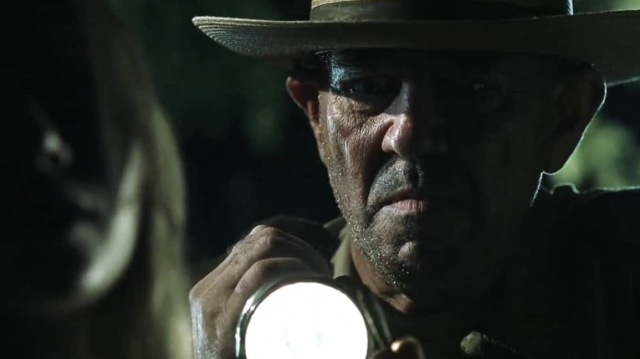
Wait a minute. Didn’t we just do this one? We’re doing something that we haven’t done yet on either year’s list by reviewing an original film and its contemporary remake on back to back days. Marcus Nispel mans the director’s chair this time for the 2003 version of The Texas Chainsaw Massacre with original creators, Tobe Hooper and Kim Henkel, serving as co-producers. Like the original, the film follows a group of young adults road tripping through Texas on their way to a Lynyrd Skynyrd concert after making a stop in Mexico to buy some marijuana. They pick up a female hitchhiker who’s in need of help. Following a failed attempt to aid her, the group stops to contact the police and are put in touch with the vile Sheriff Hoyt (R. Lee Ermey). Meanwhile, there’s a suspicious, old plantation house nearby that houses something that none of them could ever imagine.
Now, the 2003 version of The Texas Chainsaw Massacre has been reviled and hated ever since its release. Though, maybe there’s more to the film than most people give it credit for. While the 1974 version also got plenty of flak, it’s now looked at as a modern horror classic with nary a bad word said about it within the horror community. And yet, the 2003 film still doesn’t get the respect that it maybe deserves. It’s certainly a product of its time with an increased focus on being sick, twisted, and gory but, as we just said, that’s kind of what the mid 2000’s were known for in horror. What this remake does perfectly is update its predecessor into what it probably would’ve been if it had a bigger budget and modern technology. With a film called The Texas Chainsaw Massacre, this is about what you should expect from it.
There’s no doubt that the film isn’t going to appeal to everybody. Its predecessor wasn’t worried about this either. However, it does alter and refine its setting, storytelling, and, most of all, its villains. R. Lee Ermey’s Sheriff Hoyt should be as synonymous with the series now as Leatherface himself. In something of an offshoot from his famous drill sergeant role in Stanley Kubrick’s Full Metal Jacket, Ermey creates a horror villain for the ages that terrifies through intimidation and words as opposed to brute force. And speaking of Leatherface, Andrew Bryniarski’s portrayal may not be as iconic as that of original actor Gunnar Hansen but he brings an intensity and physicality to the performance that fits this more violent and sadistic remake perfectly. When all’s said and done, this isn’t 1974’s The Texas Chain Saw Massacre, this is 2003’s The Texas Chainsaw Massacre which is a heap of praise by itself. It pays homage to its origins while also feeling like something new entirely. In a sea of mediocre horror remakes that just try to redo everything from the original, The Texas Chainsaw Massacre marches to the beat of its own drum and has a bloody good time doing it.
October 25th: Horror of Dracula (1958)
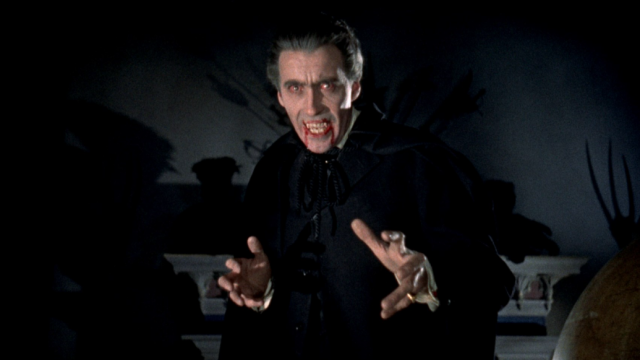
This is one that may surprise some people but probably not those who’ve actually sought this film out. Instead of the classic 1931 Universal film, we’re going with 1958’s Horror of Dracula as the go-to version of the iconic vampire’s origins. The film sees Jonathan Harker (John Van Eyssen) travel to a castle in Romania to take on a librarian position for the ominous Count Dracula (Christopher Lee). However, Harker is actually a vampire hunter looking to destroy Dracula for good but the latter has other plans. This leads to Dr. Van Helsing (Peter Cushing) tracking Harker’s moves and finding Dracula himself. Soon, the vampire sets his sights on others and it’s up to Van Helsing, along with Arthur Holmwood (Michael Gough), to stop Dracula and save his potential victims.
While both the 1931 and 1958 films do differ somewhat in story and characters, they have a similar structure and idea behind them. Of course, the 1931 film, starring Bela Lugosi in the title role, is one of the most celebrated and recognized horror films probably of all time. Yet, it doesn’t age as well as other Universal monster titles like Frankenstein, The Mummy, and The Wolf Man. That’s because, other than Lugosi’s performance and Dwight Frye as the delightfully unhinged Renfield, the film is actually quite boring. The 1958 Hammer horror version doesn’t really have this problem. Yes, the pacing can sometimes be deliberate but the story moves along pretty quickly and there’s also plenty of blood and death to keep even modern horror fans happy. The Hammer Horror films were somewhat ahead of their time as the ratings system wouldn’t allow for American films to feature this type of content until the late 1960’s. The film’s wonderful gothic sets and cinematography, the bright red blood smeared all over the place, and Christopher Lee’s excellent first outing as Count Dracula put Horror of Dracula head and shoulders over the more popular Universal version.
Now, this isn’t to say that Horror of Dracula is the more iconic film of the two. That shouldn’t even be a debate as Lugosi is the definitive Count Dracula. Though, many horror fans will stand by Christopher Lee’s run as the character as he brought a sensuality to the character and also introduced many of the common vampire tropes that exist today such as having fangs. Even at a young age, Lee had an undeniable presence that stuck with him until his death in 2015. As Count Dracula, he’s regal and sophisticated while turning into a total maniac when in any type of altercation. The film’s violence is another one of those that’s probably a bit tame by today’s standards but it far outdoes its 1931 counterpart and there’s still something effective about it even after all this time. While you should certainly see the Universal film for Bela Lugosi’s performance alone, it may be Horror of Dracula that will stick with viewers as the more contemporary classic version of the story.
October 26th: Saint Maud (2019)
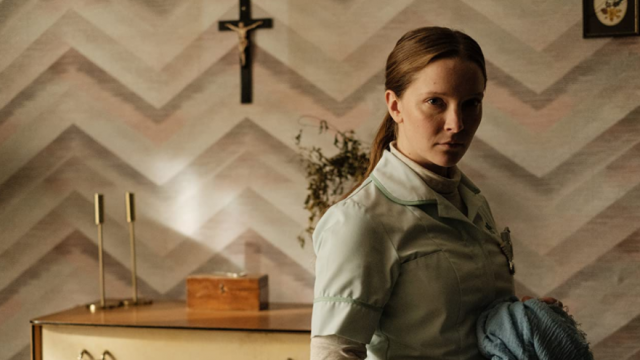
The next film on our list is one that seemed to have a lot of hype behind it before being unceremoniously released as a video-on-demand title in the United States. The feature film debut from writer/director Rose Glass, Saint Maud, centers on the titular Maud (Morfydd Clark), AKA Katie in a past life, who has transitioned into being a devout Roman Catholic and works as an in-home nurse. Assigned to care for Amanda Köhl (Jennifer Ehle), an aging dancer diagnosed with stage four lymphoma. Surely bitter about her fate, Amanda forms a strange relationship with Maud and Maud intends to do everything she can to save Amanda’s soul before her death. However, Maud has her own struggles with faith as her past still haunts her as things come to a head with Amanda.
Saint Maud is a strange film in that how it was promoted turned out to be completely different than what audiences got with the final product. The initial trailers that came out prior to the COVID-19 pandemic seemed to promise an uncomfortable and distressing A24 production. While the film certainly is these things, much of it is more a drama than an actual horror film. While genre fans thought they may be getting the next Hereditary, they instead ended up with something like First Reformed. Now, that’s not to say that there aren’t any horrors to be had throughout Saint Maud. Similar to a film like The Exorcist, the question of faith is almost always at the forefront. The main difference is that Maud’s issues come from uncertainties within herself instead of another being that chooses to exploit her. Combine this with Amanda’s terminal health problems and the film is always focused on realistic human horror as opposed to the supernatural kind.
Saint Maud is one of those films that really needs to be experienced and judged on a per case basis. At only 84 minutes in length, the film can feel a lot longer at times because it’s such an agonizingly slow burn to its truly horrific moments. Yet, it’s not a story without merit as, in some cases, faith is the only thing that some people have and it saves them from a wrong path in life. To lose or waver from it could cause a downward spiral like Clark’s Maud experiences. Meanwhile, her insistence on converting Ehle’s Amanda brings up another uncomfortable conversation as not everyone appreciates someone pushing things like religion onto them. Obviously, Saint Maud is another film on this list that isn’t for everybody but it’s certainly an experience that horror fans should seek out. If nothing else, Morfydd Clark is heartbreaking but also quite chilling as Maud as she’s the victim of various forms of abuse at every turn. In the vein of Carrie White from Brian De Palma’s 1975 film, Carrie, Maud is a sympathetic character that shows what happens if you push someone to their limits one too many times.
October 27th: Misery (1990)

As we wind down our 31 Days of Horror, we’re going to mainly focus on high profile titles across the decades of horror. Thus far, we’ve covered a lot of films from all subgenres and time periods but, of course, the closer it gets to Halloween, the more there’s a desire for classic titles as opposed to obscure ones. For our 27th entry, we have Rob Reiner’s 1990 film, Misery which sees famous author, Paul Sheldon (James Caan), get into a severe car accident before being rescued by his self-proclaimed number one fan, Annie Wilkes (Kathy Bates). Out of gratitude, Paul allows Annie to read his newest manuscript which sends her into a frenzy when she discovers that Paul intends to kill off his popular character, Misery Chastain. Though Annie remains committed to nursing Paul back to health, she does so while holding him hostage and forcing him to right the wrongs he’s done to her favorite character.
In our 17th entry on 1990’s It, we mentioned how Stephen King continues to find his way onto our list multiple times every year and, yet, here we are again. Reiner’s film comes on the heels of King’s 1987 novel of the same name and even King himself has stated that Misery is one of his favorite film adaptations of one of his books. It’s not hard to see why as Misery is all about helplessness. James Caan’s Paul Sheldon would normally have no problem escaping his captor but is physically unable to do so. Whereas something like Saint Maud is a mental and psychological struggle from within, Misery depicts a man who’s being held hostage while also not being able to fend for himself. Paul relies on Annie’s care to survive and knows that he’s at her mercy. He’s a pretty good sport also as he puts up with a lot of Annie’s frenzied outbursts and psychosis throughout the film while longing for an opportunity to escape.
No one wants to hear about James Caan’s performance though. Misery is all Kathy Bates when it comes to horror. In a star making performance, Bates’ Annie is perhaps one of the most iconic horror villains ever. She’s simply deranged and, essentially, a ticking time bomb ready to go off if Paul doesn’t appease her every wish with the character of Misery. In fact, Kathy Bates actually won an Academy Award for Best Actress for the role and is the only Oscar win for any Stephen King adaptation ever. This is insane to think about giving how many classic adaptations have stemmed from King novels from Carrie and The Shining all the way to The Shawshank Redemption and The Green Mile. For those that haven’t seen Misery, it’s worth a watch for Kathy Bates’ performance alone but, either way, it’s a fantastic film that has aged wonderfully over the past thirty plus years. Is it the best Stephen King adaptation ever? Maybe. However, there’s no doubt on how the film has resonated with horror fans and its importance in expanding the genre.
October 28th: The Amityville Horror (1979)
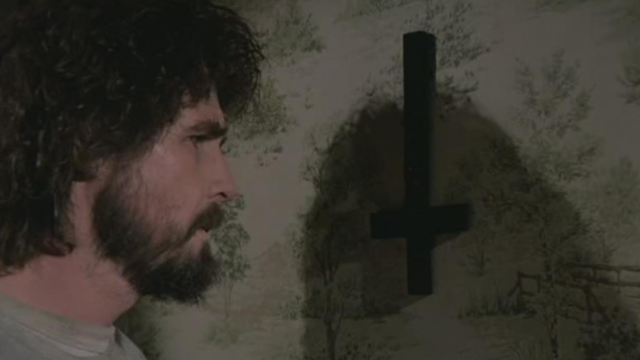
One thing we have yet to really cover on either this or last year’s 31 Days of Horror is a title based on a true story. While this next entry certainly has its doubters when it comes to authenticity, Stuart Rosenberg’s The Amityville Horror is truly a classic when it comes to old school horror cinema. George (James Brolin) and Kathy Lutz (Margot Kidder) purchase a home at 112 Ocean Avenue in Amityville, New York, following the brutal 1974 murders of the DeFeo family carried about by Ronald DeFeo Jr. Despite knowing the history of the house, the Lutz family moves in anyway and, soon, they start to experience some strange occurrences within the house. More specifically, George’s mood and attitude change constantly as Kathy fears for her and her children’s safety as their marriage begins to crumble.
Despite being released in 1979, The Amityville Horror holds up surprisingly well. There are a few cheesy and/or nonsensical moments but, for the most part, the film is still excellent even by today’s standards. In contrast, something like Tobe Hooper’s Poltergeist (which is a pretty similar film, by the way) relies far too heavily on dated special effects instead of legitimate scares. What makes The Amityville Horror so terrifying is the complete mental and emotional breakdown of its protagonist which, in turn, leads to a total breakdown of the family unit that seemingly holds him together. James Brolin absolutely shines throughout the entire film and his bipolar performance always has viewers wondering what side of him they’re going to get at any one moment. The most horrifying aspect of the film is that the horror comes from inside one’s own home and is manifested within someone thought to be trustworthy. A home is supposed to be a safe place but the one in The Amityville Horror turns out to be anything but that.
As previously mentioned, there’s a lot of debate over the legitimacy of the Lutz family’s story. If this is what they actually experienced while living in the former DeFeo house, it sounds absolutely nightmarish. However, there’s been a lot of research, evidence, and eyewitness accounts that counter their claims. Since the Lutzes, no other owners of the house have experienced anything supernatural. Regardless, as a film, The Amityville Horror is no laughing matter and delivers a very serious and intense story. Even if it isn’t true, the story will always have a lasting legacy as a disturbing piece of horror cinema filled with real-life intrigue. Given the cultural and historical impact of the DeFeo murders and subsequent Lutz family story, the lines between fiction and reality have forever been blurred to the point that no one will probably ever really know what happened in that house during the family’s stay there. Couple this with some solid direction from Stuart Rosenberg and The Amityville Horror feels like something far ahead of its time and still a relevant film in the genre after all these years.
October 29th: The Thing (1982)
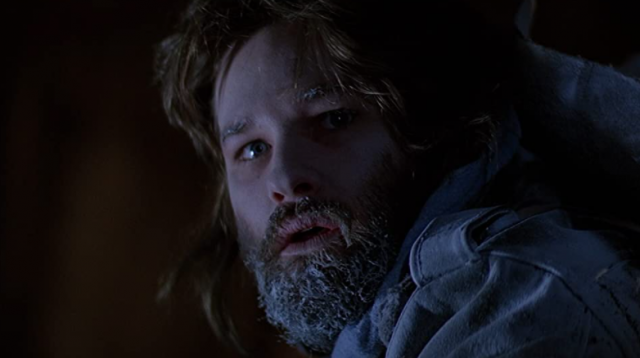
There are only a handful of films you can turn to that embody everything that the horror genre is and can be. Some that have a great story can delve too far into the drama while others become outright gore-fests with all the blood, guts, and murder that hardcore fans can handle. Every once in a while, though, a film comes around that’s the perfect mix of all things horror and, in this instance, it’s no surprise that it comes from a genre legend in John Carpenter. His 1982 film, The Thing, follows a research team in Antarctica as they combat a shape shifting alien that can assume the form of its victims. Paranoia sets in as the team soon realizes that they’re unable to trust each other as the eponymous thing breaches their ranks. Tensions rise as they fight among each other while being seemingly unable to stop the spread of their common enemy.
Upon its release, The Thing was hated but has since developed a cult following. Watching the film here in 2021, it’s without doubt one of the best horror films ever made. Though it’s an adaptation of the 1938 novella, “Who Goes There?,” and a remake of the 1951 film, The Thing from Another World, Carpenter’s version firmly stands on its own as an essential title in the genre. After all, The Thing has spawned its own line of media including video games, comic books, and even a 2011 prequel film of the same name. While many horror remakes are panned by both critics and audiences, Carpenter’s The Thing is a film that has persevered since its rocky release and become a horror pioneer.
So, what makes The Thing a perfect horror experience? From its unique story to its recognizable cast of characters (including Kurt Russell’s R.J. MacReady) to the film’s legendary special effects work led by Rob Bottin, everything just seems to work perfectly. The feelings of isolation, loneliness, and fear really define the entire experience as the characters are trapped in this unfamiliar environment that has the ability to kill them as quickly as the actual monster they’re facing. Similar to how Ridley Scott’s Alien mastered this type of suspense in space, Carpenter’s Thing adapts it to the Antarctic to equal effect. Of course, we have to mention Rob Bottin’s effects once again as they’re still just as terrifying today as they were in 1982. Every incarnation of the titular “thing” is more monstrous than the last. With a cast of characters not knowing what kind of dangers they face, viewers will feel the same way as “the thing” could literally be anything. What else is there to really say about this film? John Carpenter’s The Thing is perfect in every sense of the word.
October 30th: A Quiet Place (2018)
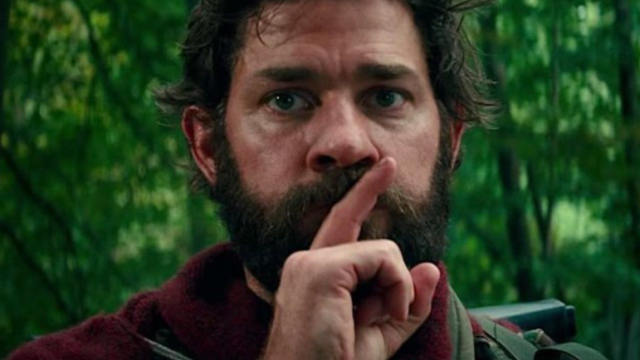
When it comes to modern horror, there are only a handful of titles that stand out as essential in a sea of mediocre sequels, remakes, and unoriginal rehashes of old ideas. John Krasinski’s A Quiet Place is absolutely one of those titles. The film follows the Abbott family as they navigate a post-apocalyptic world filled with creatures that have ultra-sensitive hearing. Due to a past tragedy, the Abbotts work even harder to live in mostly complete silence to avoid any more run-ins with the creatures. The patriarch, Lee (Krasinski), acts as the brains behind the Abbotts strategic movements but, eventually, their luck runs out as his wife, Evelyn (Emily Blunt), becomes pregnant and incites a whole new level of challenge for Lee and his family.
The story of A Quiet Place is very, very simple but also effective. Given the creatures’ ability to hear pretty much everything, a good chunk of the film is spent in silence. The Abbotts communicate via sign language, facial expression, and gestures while laboriously learning to live in this dangerous new world. The film’s ability to entertain and, especially, build suspense is on another level when it comes to modern horror films. While shrouding nearly half of a film in silence seems like a bad idea, it works to perfection here. Every sound the family makes is emphasized and, as a viewer, you truly do fear for the characters when things start to go wrong.
A Quiet Place is just a different kind of horror film. Along with Ari Aster’s Hereditary (which we covered on last year’s list), it was a breath of fresh air upon its 2018 release. Both films seemed to spark something of a horror renaissance that has allowed for films like The Night House and Saint Maud to exist as well. Even the sequel, A Quiet Place Part II, is excellent even if its predecessor is just a tiny bit better overall. Simply put, the horror genre needs more films like A Quiet Place. Films with new, original, and unique ideas have always been staples of a genre that has lost its way at times. With copycats and remakes aplenty, A Quiet Place stands out as a pioneering film of the last half decade and one that every horror fan should see. Actually, it’s a film that every film fan should see because it really is that good.
October 31st: Halloween II (1981)
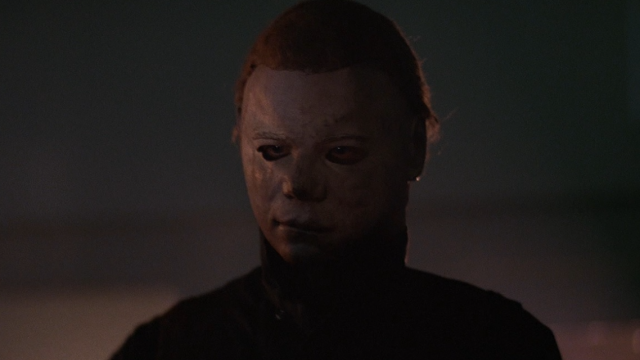
Well, we made it! Today is Halloween and that means that everyone is entitled to one good scare. For our 31st and final entry on our second annual 31 Days of Horror, we take a look at the original Halloween II from 1981! Taking place on the same night of John Carpenter’s 1978 opus, homicidal mental patient, Michael Myers (Dick Warlock), escapes into the night after being shot six times by his former doctor, Samuel Loomis (Donald Pleasence). While the police deal with the fallout of Michael’s reign of terror on the town of Haddonfield, the masked killer makes his way to the local hospital to finish what he started and kill Laurie Strode (Jamie Lee Curtis).
We won’t go too much deeper into the story because, while it’s certainly cliché to cover a Halloween film on Halloween, this one established the direction of the series for the next two decades. John Carpenter’s original film didn’t need much explanation for viewers to understand it but Halloween II, directed by Rick Rosenthal this time around, gave Michael Myers a motive that casual fans still acknowledge all these years later. The most recent sequels in 2018’s stupidly named Halloween and this year’s Halloween Kills try to completely nix the story of Halloween II and everything that came after but, frankly, the newest film would make more sense if the previous timeline’s events weren’t retconned. This is the problem that modern reboot/sequels have as sometimes people don’t want to forget or disregard details about something they love. With Halloween II, the story of the first film folds perfectly into this sequel and a legacy was born that can’t be erased.
Originally, we were going to cover Rob Zombie’s 2007 remake of Halloween as it definitely has merit even with some questionable decisions made by Mr. Zombie. However, Halloween II just fits the spirit and feel of Halloween night better than either of Zombie’s attempts at resurrecting Michael Myers could dream of doing. As previously mentioned, Halloween II is the film that established Michael’s motives for hunting down Laurie and blends seamlessly with its predecessor to make one cohesive Halloween night. Again, it may be cliché to turn to one of these films in the long running series but there’s a reason they have the name Halloween. It’s because they embody everything about the chilly October day and this film is no different. Halloween II maybe doesn’t match Carpenter’s film but it’s a damn good sequel and worthy of a watch on any October night and especially on Halloween.
That’s all for Cinema Smack’s second annual 31 Days of Horror! We hope you enjoyed it and felt as if we compiled a deep and comprehensive list of horror titles for this Halloween season! Thanks to everyone for checking out the list and, of course, Happy Halloween!

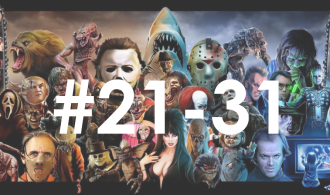
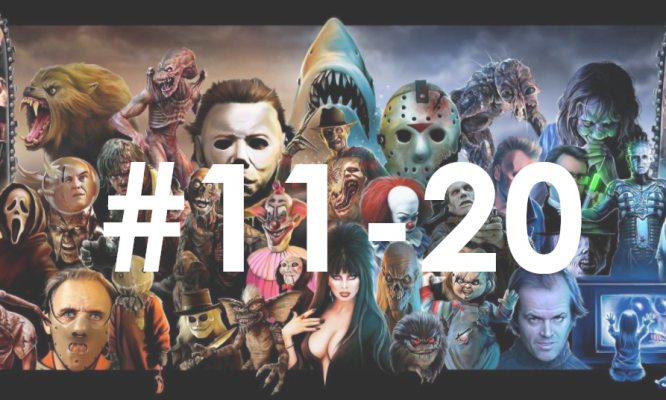
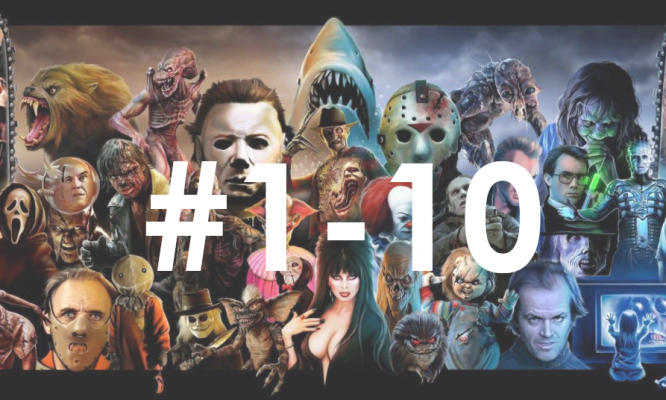
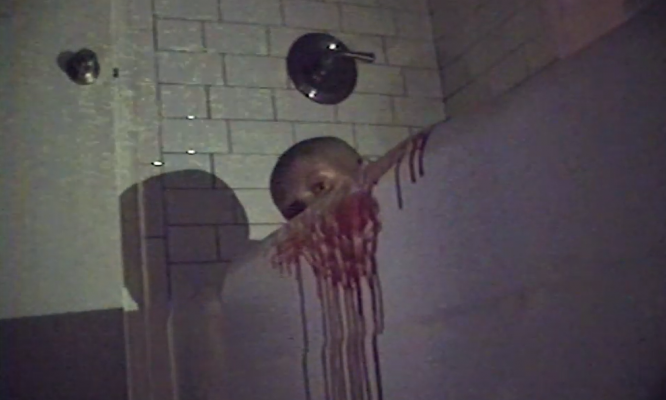
[…] it for Part 2 of our 31 Days of Horror! Click here for the third and final part of our […]